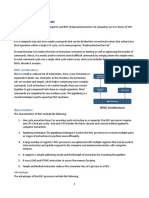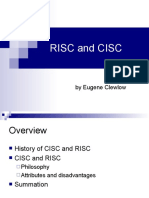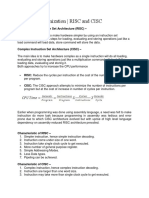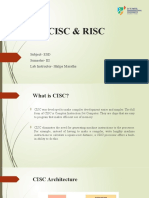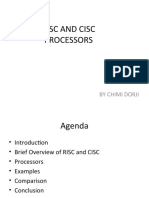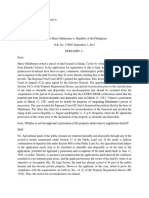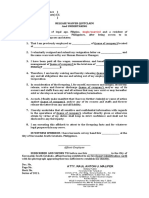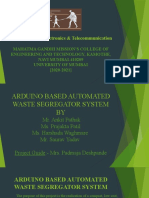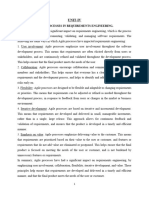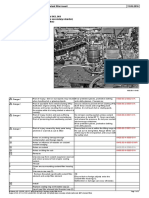0% found this document useful (0 votes)
4 views4 pagesRISC and CISC in Computer Organization
The document compares Reduced Instruction Set Architecture (RISC) and Complex Instruction Set Architecture (CISC) in computer organization, highlighting their characteristics, advantages, and disadvantages. RISC focuses on simpler instructions for faster execution and lower power consumption, while CISC uses complex instructions to reduce code size and improve memory efficiency. The document also discusses CPU performance and provides examples illustrating the differences in instruction handling between RISC and CISC.
Uploaded by
sannigrahi.jeetCopyright
© © All Rights Reserved
We take content rights seriously. If you suspect this is your content, claim it here.
Available Formats
Download as PDF, TXT or read online on Scribd
0% found this document useful (0 votes)
4 views4 pagesRISC and CISC in Computer Organization
The document compares Reduced Instruction Set Architecture (RISC) and Complex Instruction Set Architecture (CISC) in computer organization, highlighting their characteristics, advantages, and disadvantages. RISC focuses on simpler instructions for faster execution and lower power consumption, while CISC uses complex instructions to reduce code size and improve memory efficiency. The document also discusses CPU performance and provides examples illustrating the differences in instruction handling between RISC and CISC.
Uploaded by
sannigrahi.jeetCopyright
© © All Rights Reserved
We take content rights seriously. If you suspect this is your content, claim it here.
Available Formats
Download as PDF, TXT or read online on Scribd
/ 4


